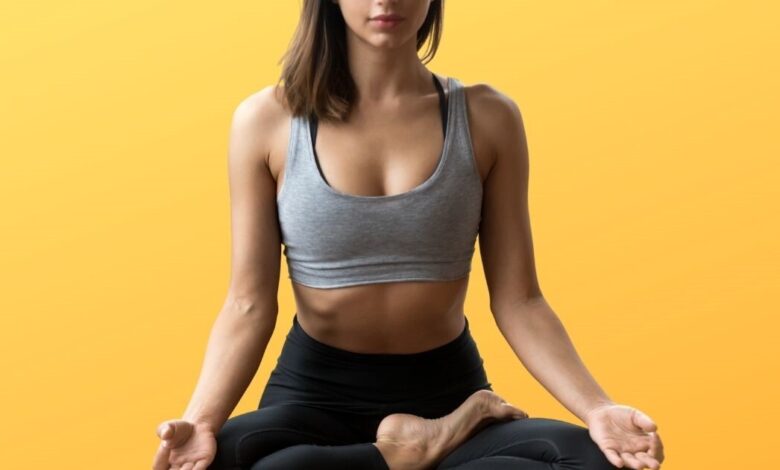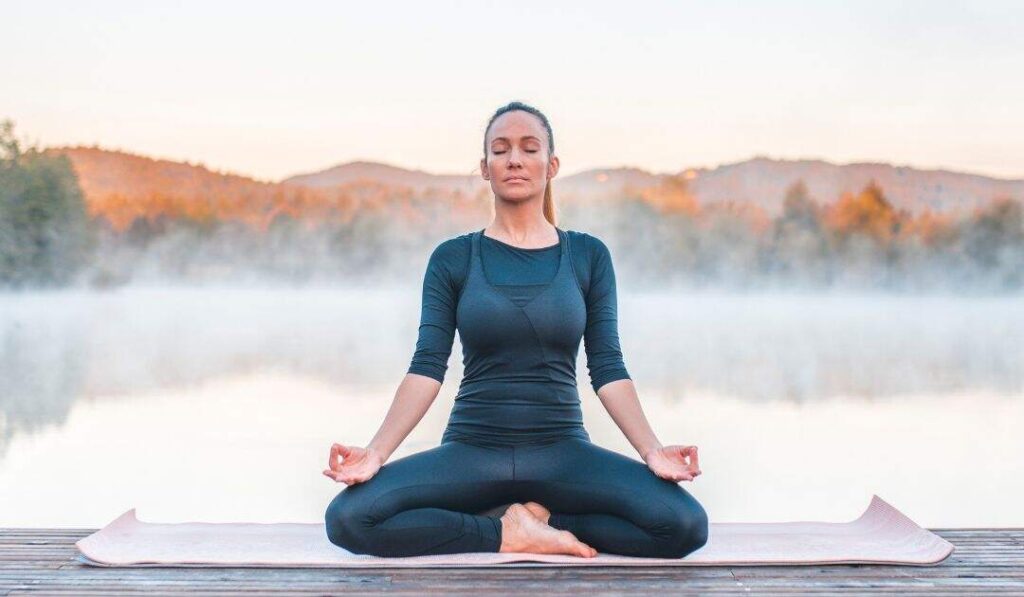
What is Siddhasana?
The word Siddhasana is a combination of two Sanskrit words; Siddha, meaning accomplished, and Asana meaning pose. Moreover, it is believed that practicing Siddhasana gives the practitioner mastery over their ego-based self, ultimately leading to Samadhi (the ultimate bliss).
The Hatha yoga text (i.e., Hatha yoga pradeepika) describes Siddhasana as one of the most potent sitting postures. Additionally, many experienced yoga practitioners believe that the status of Siddhasana is only second to Padmasana. Further, both Siddhasana and Padmasana are the most recommended asana or pose to practice meditation.
Steps to do Siddhasana (The accomplished pose)
- First, start by sitting comfortably on the floor with your legs stretched out straight and both hands on your sides.
- Next, take your left heel close to your body near your groin area by bending your knee. Your left heel should touch the perineum.
- Similarly, now fold your right knee and place your right foot on your left foot.
- Your heels should be in line with one another and also with the middle of your body.
- Slide your right toes into the space between the left calf muscle and thigh.
- You can either place your hands, palms down on your knees, or may assume the Chin Mudra or the Jnana Mudra with the fingers.
- Your knees should touch the floor, and your spine should be erect.
- You can fix your gaze in between eyes in Shambhavi Mudra and become aware of your breathing process.
- You can hold this position as long as you are comfortable or practice meditation in this pose.
Benefits of the Accomplished Pose
- Siddhasana is an excellent posture for meditation, and it is also an alternative for those who have difficulties practicing Padmasana. Besides, it also holds the spine straight.
- The left heel presses against the Mooladhara Chakra, ensuring the energy currents flow towards the spine.
- Additionally, the right heel presses against the Swadhisthana Chakra, which channelizes the sexual energy upward and transforms it into Ojas.
- Siddhasana controls the hormone secretion and also gives the practitioner control over sexual urges.

Variations
If you feel any discomfort or pain due to the pressure where the ankles intersect each other, you can place a soft folded piece of cloth between them to reduce the pressure.
Moreover, if you are a total beginner, do not hold this position for long at once. Stop and reposition your body whenever you feel pain or discomfort. Eventually, your body will be accustomed to this pose with practice, and movements will be fluid.
Initially, if you hold the position for some time, you may feel uncomfortable due to the pressure at the perineum, but this discomfort vanishes with regular practice.
Precautions
- Siddhasana should be avoided if one has knee, spine, or hip issues.
- Persons with arthritis should also avoid the accomplished pose, as sitting in this posture might cause inflammation of joints.
- One should also avoid Siddhasana if they have a sacral infection or sciatica pain, as the asana hinders blood flow to the sciatic nerve.
Common Mistakes
Checkout the common mistakes while doing Siddhasana on this article from verywellfit.